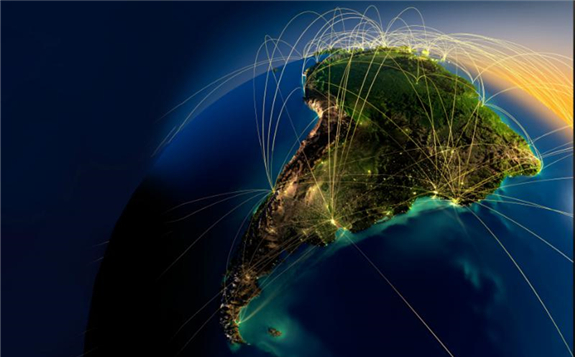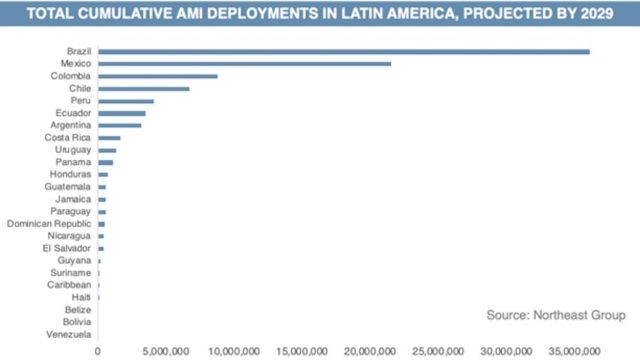Latin America is a massive potential market for the globalisation of smart energy. Projections show the region accounts for over 85 million smart meter deployments by 2029. Countries like Brazil, Mexico, Argentina, Colombia, Chile, Ecuador, Peru are leading the charge and are well on their way to deploying millions of smart meters by that point.

Importantly, it is a region where the benefits of the smart grid can bring about major improvements in efficiency and stability of the energy supply and a fair supply of energy for all. At the same time, there are special challenges that apply to this region.
To make the smart energy transition successful in LATAM, these challenges need to be addressed squarely:
Leap-frogging technology steps
Countries in LATAM will often jump to the latest technologies rather than investing in a “sequence” of technology improvements. This makes absolute sense but means that the communications infrastructure, deployment and operational processes available to support the smart grid need to be carefully assessed. Whilst large cities may employ the latest 5G communications, a national rollout may need to also support legacy technologies to bring the benefits of the smart energy transition to all.

Implications of COVID-19
Energy providers with smart metering infrastructure have seen the value of their investment. They can continue billing and connect/disconnect activities whilst maintaining social distancing. The pandemic has taught us how important this is, so we are ready for the future. On the other side, however, near-term rollout plans need to recognise the effects of social distancing on the deployment of AMI infrastructure.
Non-technical loss reductions
Energy theft and fraud often inflate the cost of energy. By removing humans from the meter-to-cash process, automating disconnect/connect and sensing tampering activities, smart meters contribute to a significant reduction in non-technical losses – thus improving the energy provider’s bottom-line. This also means that consumers’ bills are not increased to compensate for the activities of criminals, and leads to fairer access and pricing for energy. For the energy provider, there are implications around energy loss reduction – every energy unit which is saved from generation through to transmission and distribution, has a contribution to the bottom-line.
Visibility of the critical national infrastructure resource
Many energy providers have little visibility of what happens in the low-voltage grid. This makes it hard to manage outages and assess impacted customers. The smart grid solutions need to provide that visibility, allowing the energy provider to quickly identify outages, triangulate to the root cause, and prioritise based on the full social impact of outages.
Health and safety implications
Increased remote control and automation means that energy providers are reducing the exposure of their staff to conflict situations. Consumer disconnection is where tempers can flare, and organised crime can turn some parts of a city into “no-go areas” for meter reading. Automation thus benefits the health and safety of staff.
The smart energy transition
Distributed generation and storage, local energy brokering, micro-grid and electric vehicles represent a huge opportunity for LATAM. Technology investments which address the points described above can also act as the framework and enablers for the smart energy transition incorporating these innovations.
The delivery of 85 million smart meters into the LATAM region by 2029 represents a challenge which can be addressed by technology. Developing the case for doing so, which embraces all the specifics of the LATAM region to generate self-sustaining rollout programmes, is the business challenge, and will reflect each of the characteristics that are specific to the LATAM region.